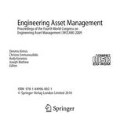Abstract
Pneumatic conveying involves the transportation of a wide variety of dry powdered and granular solids through pipeline and bends using high pressure gas. It is a frequently used method of material transport particularly for in-plant transport over relatively short distances. This is primarily to exploit the degree of flexibility it offers in terms of pipeline routing as well as dust minimization. Approximately 80% of industrial systems are traditionally dilute phase system which uses relatively large amount of air to achieve high particle velocities to stay away from trouble, such as blocking the pipeline. However, for many applications higher velocities lead to excessive levels of particle attrition or wear of pipelines, bends and fittings. To combat these problems, there are systems designed to operate at relatively low velocity regimes. Yet one problem remains as a major issue with these conveying systems which is wear. In pneumatic conveying, service life is dictated by wear in critical areas of the pipelines and bends due to higher interaction between the particles and the surface. Depending on the conveying conditions or modes of flow, wear mechanism can be abrasive or erosive or a combination of both. Recent developments in predictive models of wear of materials showed that by using the particles energy dissipated to the surface and the surface material properties, it is possible to predict the overall material loss from the surface. Material loss from the surface is then can be converted to determine the pipeline thickness loss that can be used to indicate the service life of the pipeline. In this paper wear mechanisms in the critical wear areas of pneumatic conveying pipeline have been analysed. Based on the wear mechanisms, predictive models have been selected from the literature. A number of factors have been incorporated to apply the model into pneumatic conveying processes. Conveying tests were performed in the laboratory to determine the time to failure as well as gradual thickness loss in the bend. Finally experimental results have been compared the model output and the variations have been analysed for further improvement of the models.
Access this chapter
Tax calculation will be finalised at checkout
Purchases are for personal use only
Preview
Unable to display preview. Download preview PDF.
References
Bitter, J.G. (1963) Wear, 6, 5-21
Cenna, A.A., Page, N.W, Williams, K.C. and Jones, M.G, (2008) Wear, 264, 905-913
Evans, A.G. and Marshall, D.B., (1981) in Rigney, D.A., (ed.), Fundamentals of Friction and Wear of Materials, ASM, 439-452
Cenna AA, Williams KC, Jones MG and Page NW, (2006) Flow Visualisation in Dense Phase Pneumatic Conveying of Alumina, Presented at the Inaugural World Congress on Engineering Asset Management, Gold Coast, Australia.11-14 July, 2006.
Mills, D. and Mason, J.S., (1976) Powder Technology, 17, 37-53
Talia, J.E., Ballout, Y.A. and Scattergood, R.O., (1996) Wear, 196, 285-294
Kim Pang, Cenna, A.A, Shengming T and Jones, Jones, MG., (2009) To be presented in WCEAM 2009, Greece, Athens.
Meneve, J., Vercammen, K., Dekempeneer, E. and Smeets, J., (1997) Surface and Coatings Technology, 94-95, 476-482.
Levy, A., (1995) Solid Particle Erosion and Erosion-Corrosion of Materials, Ch.5, ASM International.
Fennie, I., (1960) Wear, 387-103
Nelson, J.H. and Gilchrist, A., (1968) Wear, 11, 111-122.
Author information
Authors and Affiliations
Editor information
Editors and Affiliations
Rights and permissions
Copyright information
© 2010 Springer-Verlag
About this paper
Cite this paper
Cenna, A., Pang, K., Williams, K., Jones, M. (2010). Micromechanics of wear and its application to predict the service life of pneumatic conveying pipelines. In: Kiritsis, D., Emmanouilidis, C., Koronios, A., Mathew, J. (eds) Engineering Asset Lifecycle Management. Springer, London. https://doi.org/10.1007/978-0-85729-320-6_31
Download citation
DOI: https://doi.org/10.1007/978-0-85729-320-6_31
Publisher Name: Springer, London
Print ISBN: 978-0-85729-321-3
Online ISBN: 978-0-85729-320-6
eBook Packages: EngineeringEngineering (R0)

